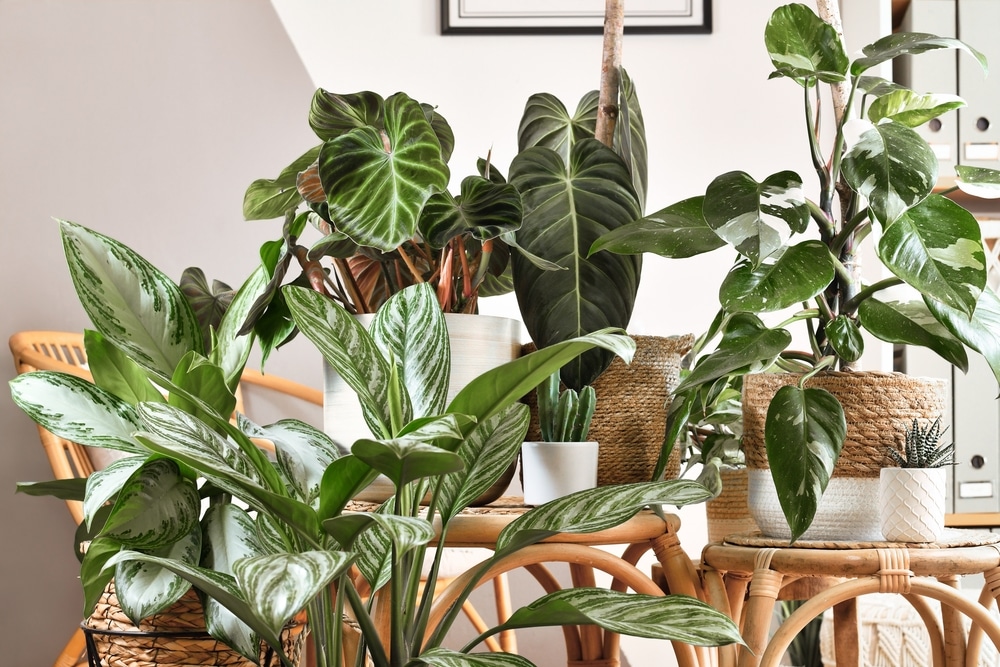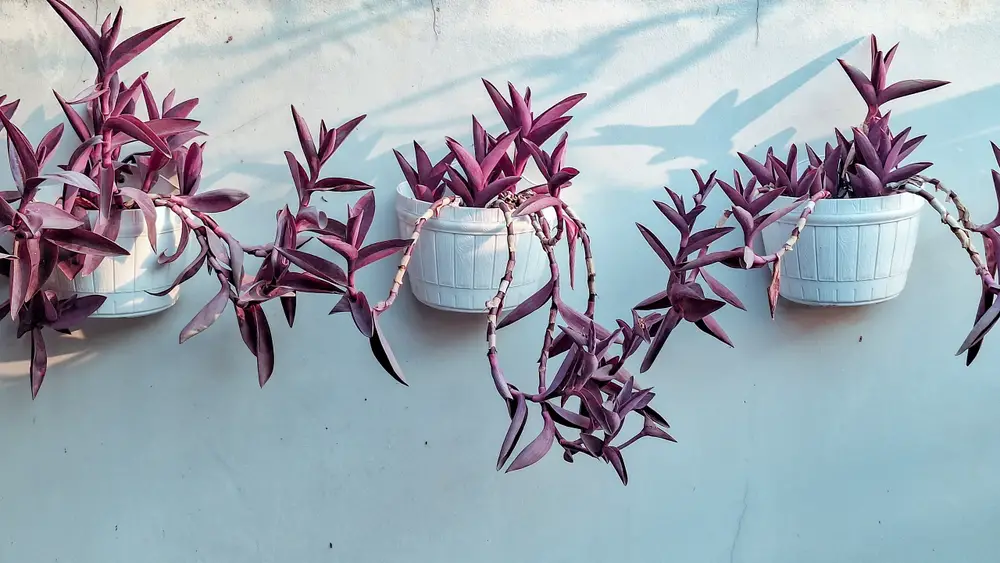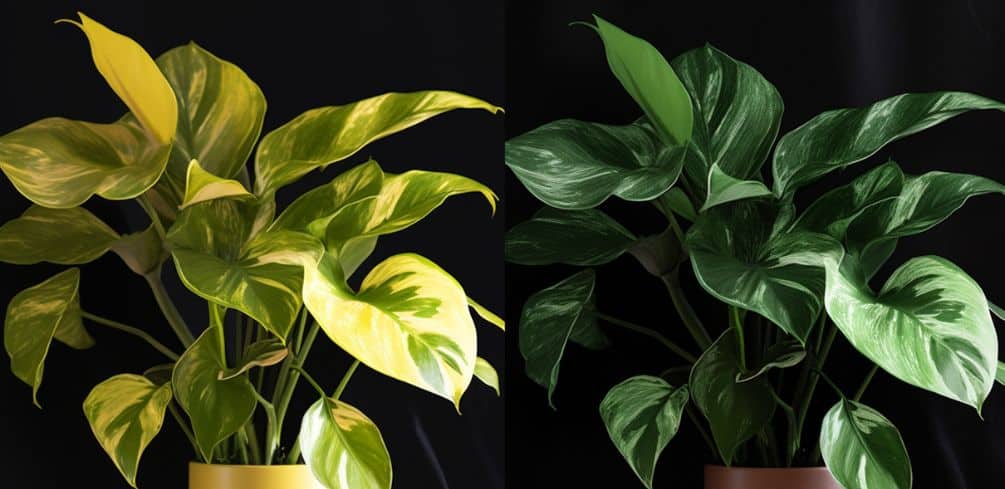Pothos plants, also called Devil’s ivy, and philodendron plants tend to confuse many people.
They do look alike in many ways, but at the same time there are distinct differences between the two.
Both the pothos and the philodendron make great houseplants and adorn many people’s living rooms and kitchens, but once you learn the differences between the two plants, you’ll instantly be able to recognize them from that point forward.
While both pothos and philodendron are in the Araceae family, they are in two different genera – Pothos plants belong to the Epipremnum genus and Philodendron plants belong to the Philodendron genus. They are different, therefore, in several ways, including the shape and texture of their leaves, their growing requirements, and their growth habits, among other things.
Learning the difference between pothos vs. philodendron isn’t that difficult once you learn a little more about the two plants.
To get started, let’s take a look at the main differences between these two plants in more detail.
Leaf Shape and Texture
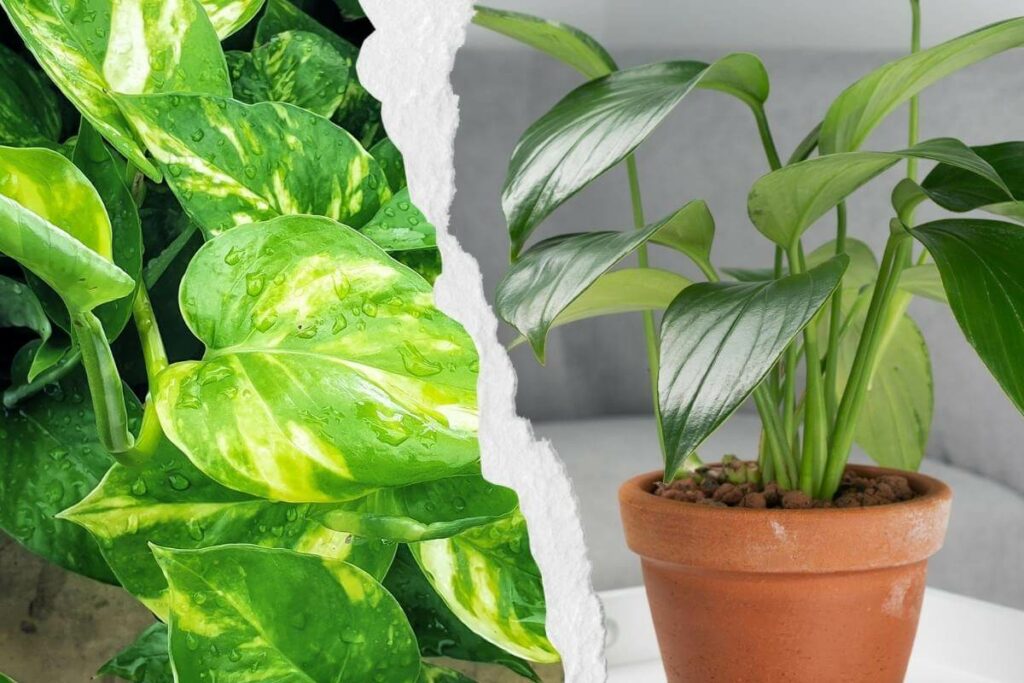
One of the easiest ways to tell pothos and philodendrons apart is by their leaves.
Philodendrons have more heart-shaped leaves that are thinner with a soft texture.
Pothos, on the other hand, have leaves that are larger, thicker, and waxier.
If you look at the petiole, which is the joint that connects the leaf to the stem of the plant, you’ll notice another difference.
The base of a pathos leaf is relatively straight, whereas the base of the philodendron leaf shows a definite curve inwards.
The latter is also shaped like the top of a heart.
Growth Habit and New Leaves
Cataphylls are tiny leaves that form around the new leaf as it grows in order to protect it.
These small leaves remain on the plant until the new leaf is able to emerge and stand on its own, so to speak.
Once that happens, the cataphylls usually just dry up and fall off of the plant.
This is yet another way to tell the difference between pothos and philodendron plants.
While cataphylls are found on the philodendron plant, pothos plants tend to grow new leaves from the previous leaves.
In other words, you simply won’t find any cataphylls on the pothos plant as you do on the philodendron plant.
When looking at how the new leaves on each plant grow, you can also pay attention to the color and shape of the leaves because they are different with each one of these plants.
For example, when the pothos plant gets a new leaf, it is curled tightly and unfurls slowly over time.
Once it unfurls, the leaf is a lighter shade of green than the older leaves. Older, more mature leaves will darken over time on pothos plants.
On the other hand, new leaves on the philodendron plants are completely encased by cataphylls.
You really only see the new leaves once those cataphylls have dried up and fallen off of the plant. Once that happens, you’ll see a baby leaf that has either a pinkish or yellowish tint to it.
Have You Noticed: Philodendron leaves only turn greener as they mature.
Petioles and Aerial (Air) Roots
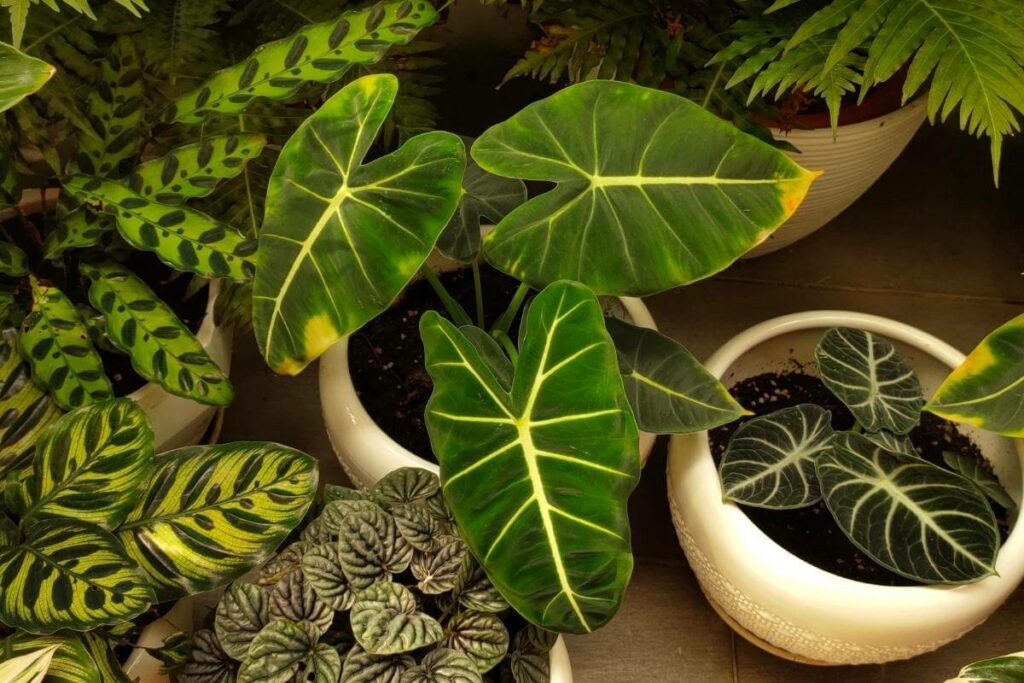
First of all, both pothos and philodendron plants have very aggressive aerial roots.
This is what allows the plants to climb and vine around various surfaces and what makes both plants so great at being a climbing plant.
But if you look closely at the aerial roots themselves, you’ll notice a bit of a difference:
- On a pothos plant, there is only one large aerial root for every node that’s on the plant.
- Philodendrons can have smaller aerial roots per node and more aerial roots than the pothos plant does.
Because of this, the philodendron plant tends to look more untamed and out of control than the pothos plant does, which is another reason why it makes such a great climbing plant.
On a pothos plant, the nubs on the aerial roots are thick and there is one root that extends from each node.
Philodendron aerial roots are much thinner and often grow in groups of two to six each.
The petioles of both the pothos and philodendron plants are also very different.
These two types of plants have different growth habits and therefore, the petioles do not look the same.
For one thing, pothos plants have petioles that indent towards the stem that they connect to, while the petioles on a philodendron plant are very round.
The latter also tend to be thinner than the petioles of the pothos plants.
Growing Differences
Here is where you can find even more differences between the pothos and the philodendron plants, but let’s first take a look at the similarities between the two:
- Both pothos and philodendron plants are low-maintenance houseplants that nearly anyone can grow successfully.
- They are also a lot alike when it comes to the growing requirements such as light, water, temperature, and soil.
So, it may seem that there aren’t many differences when it comes to growing the plants, but there actually are some differences.
First of all, while both pothos and philodendron plants do well with low light, the pothos plants do much better in low-light conditions.
For instance, while both plants can get leggy and start to grow even in low light, philodendrons will get that way quicker than pothos plants and usually start to grow very small leaves since they aren’t getting enough light.
Pothos plants, on the other hand, have a leaf size that is essentially unaffected by low light. This is because they do better with little lighting than philodendron plants do.
Pothos plants are more tolerant of drought than philodendron plants, and they are also a little bit easier to grow from regular cuttings.
This makes them easier to grow for people who sometimes forget to water their plants or who receive cuttings from somewhere and are anxious to start growing their own pothos plants.
In This Respect: It seems that pothos plants are a little bit tougher and sturdier than philodendron plants, even though the latter are still relatively sturdy.
Some Other Differences Between the Two Plants
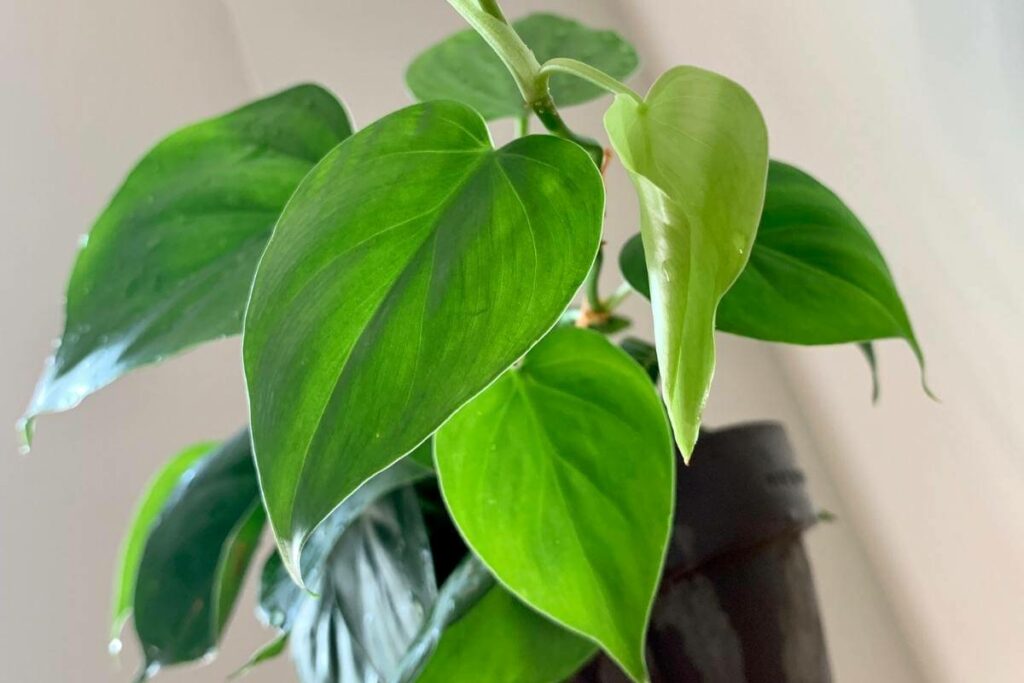
Besides these things, there are a few other differences between pothos plants and philodendron plants you might want to be aware of.
For instance, let’s consider the stems on the pothos plants as compared to the philodendron plants.
Here are a few differences that you’ll notice if you look closely enough:
- Pothos stems are thick and roughly the same color as their leaves
- Philodendron stems are thinner than pothos stems and are a greenish-brown color and an orange-brown color at the bottom
There is also the taxonomy of each of these plants.
As mentioned earlier, both the pothos and philodendron plants belong to the Araceae family, but when it gets broken down further, there’s a big difference.
There are many different types of each of these plants, which include:
- Pothos plants: golden pothos, jade pothos, and neon pothos, all of which fall under the species epipremnum aureum.
- Philodendron plants: the most common is the heartleaf philodendron, which falls under the species philodendron hederaceum.
Other varieties include the philodendron brasil, which has a lime-green stripe down the middle, and the philodendron micans, which has soft velvet-like leaves.
These are yet some more differences between pothos plants and philodendron plants, but it’s good to know that there are lots of different species of both plants.
Let’s face it; it’s simply fun to have several different types of household plants to make your home more decorative and a lot more fun to live in.
If you shop for pothos or philodendron plants, you don’t have to overly concern yourself with how to take care of them.
Excellent Advice: Just make sure that you read the directions and follow them to the letter and your plants should grow and thrive for many years to come.
Are There Other Plants That Are Similar?
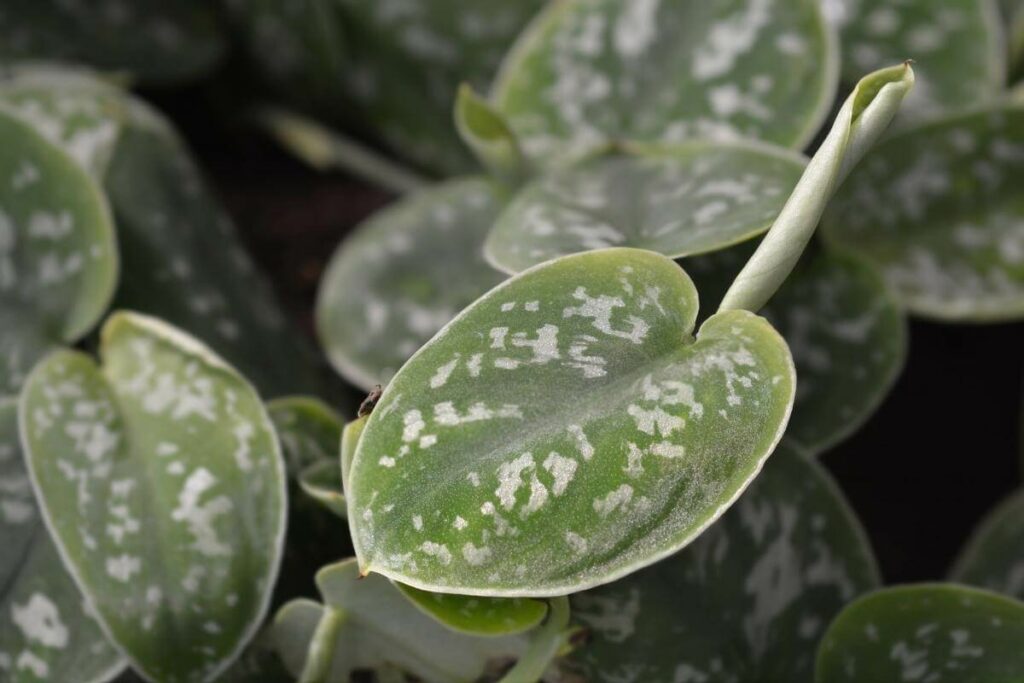
And speaking of pothos and philodendron plants looking alike, there is another plant in the Araceae family that looks like both of these plants.
It is called the Scandipsus pictus, but it is known by the name Satin pothos.
Ironically, it is not a pothos at all, but it looks so much like one that this is what people call it.
The growth requirements for the Satin pothos are much like those for the pothos and philodendron plants, but the leaf pattern makes it look a little different than both of these plants.
Satin pothos plants have patches of shimmery silver all over their leaves, giving it a very shiny and satin-like look.
If you look at the Satin pothos’ leaves, the plant is instantly recognizable.
Don’t Forget: You should also keep in mind that in addition to some of the plants already mentioned in this article, there are other varieties of both pothos and philodendron plants that look very similar to one another.
Final Words
That being said, you now have a few tools that you can use to determine the difference between these two types of plants, which results in taking better care of the plants from now on.

